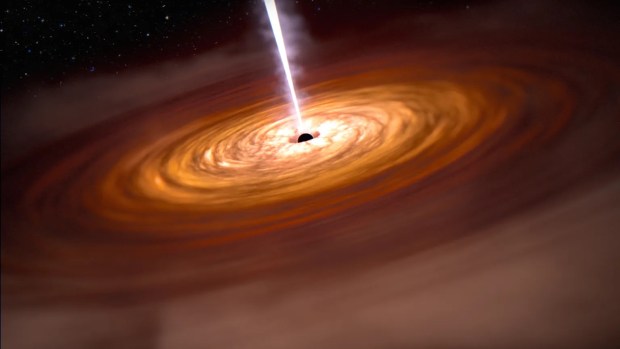A black hole on a list of the best deep-sky targets? That sounds like an oxymoron! But for the observer who likes to track down the unusual, this is an ideal target. In a telescope, Cygnus X-1 looks like another faint star among many — and to be honest, this is true. But astronomical research shows us that this seemingly insignificant star is so much more.
The first indication it was peculiar was noted in 1964, when a pair of rocketborne Geiger counters discovered an X-ray source. Astronomers traced the X-rays to the 9th-magnitude star HDE 226868 in Cygnus. Its X-1 designation refers to its identification as the first X-ray source in that constellation.
We now know Cygnus X-1 contains a black hole and a star in a binary system. The star is also classified as the variable star V1357 Cygni, a hot supergiant (think Rigel) with an O9.7 spectral classification. Its brightness ranges from magnitude 8.72 to 8.93, though it may fall below 9th magnitude on occasion. Long-term investigations show these brightness fluctuations occur as the star’s size varies. When it grows too large, matter is pulled from the outer layers into an accretion disk around the black hole. The star has been fading slightly but steadily since 1999.
Cygnus X-1’s claim to fame is that it was the first candidate black hole. In December 1974, two famous theoretical astrophysicists, Stephen Hawking and Kip Thorne, bet each other magazine subscriptions over whether it was a black hole. Thorne was pro, Hawking was con. Thorne ultimately won his one-year subscription to Penthouse magazine. Hawking would have won four years to Private Eye.
Cygnus X-1 is 7,200 light-years away. While a typical black hole formed from a collapsing star ranges from 3 to 10 solar masses, this one is an estimated 21 solar masses — making it the most massive stellar-mass black hole known. If that isn’t cool enough, scientists recently found that the black hole is rotating at close to the speed of light!
Make sure to explore Astronomy’s full list of 101 cosmic objects you must see. New entries will be added each week throughout 2022.
To get the latest astronomical news and observing content delivered directly to your door, subscribe to Astronomy magazine today!










